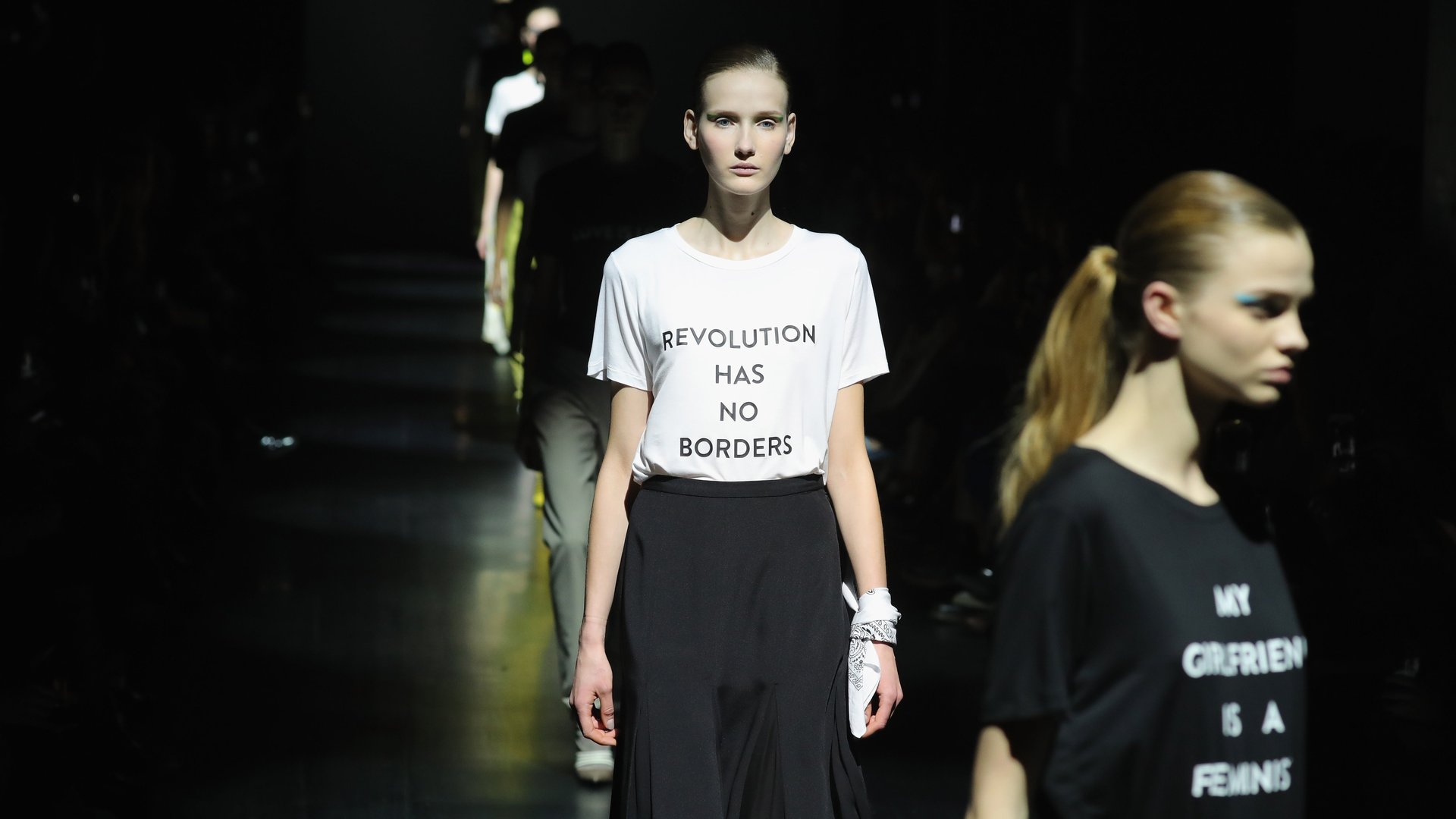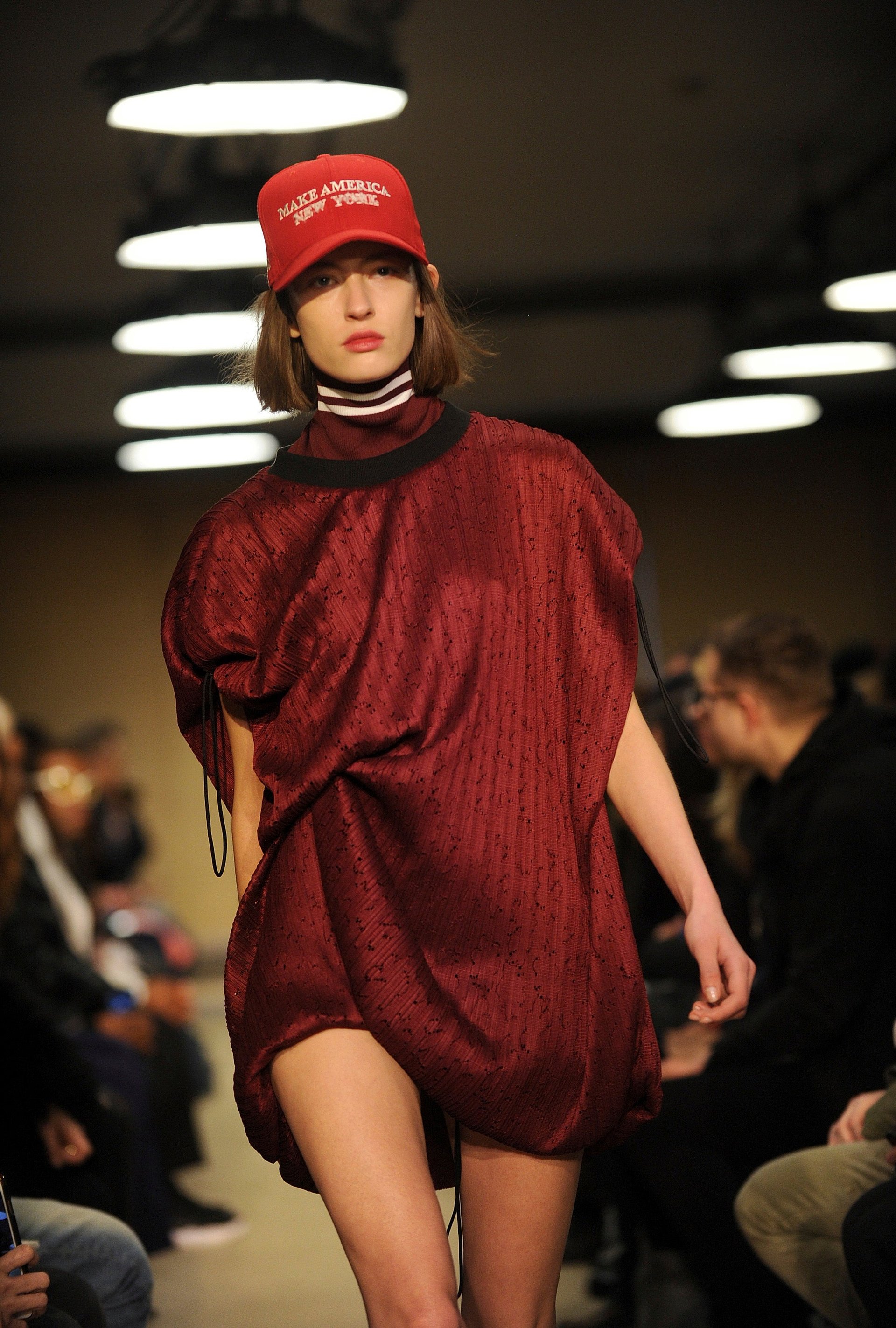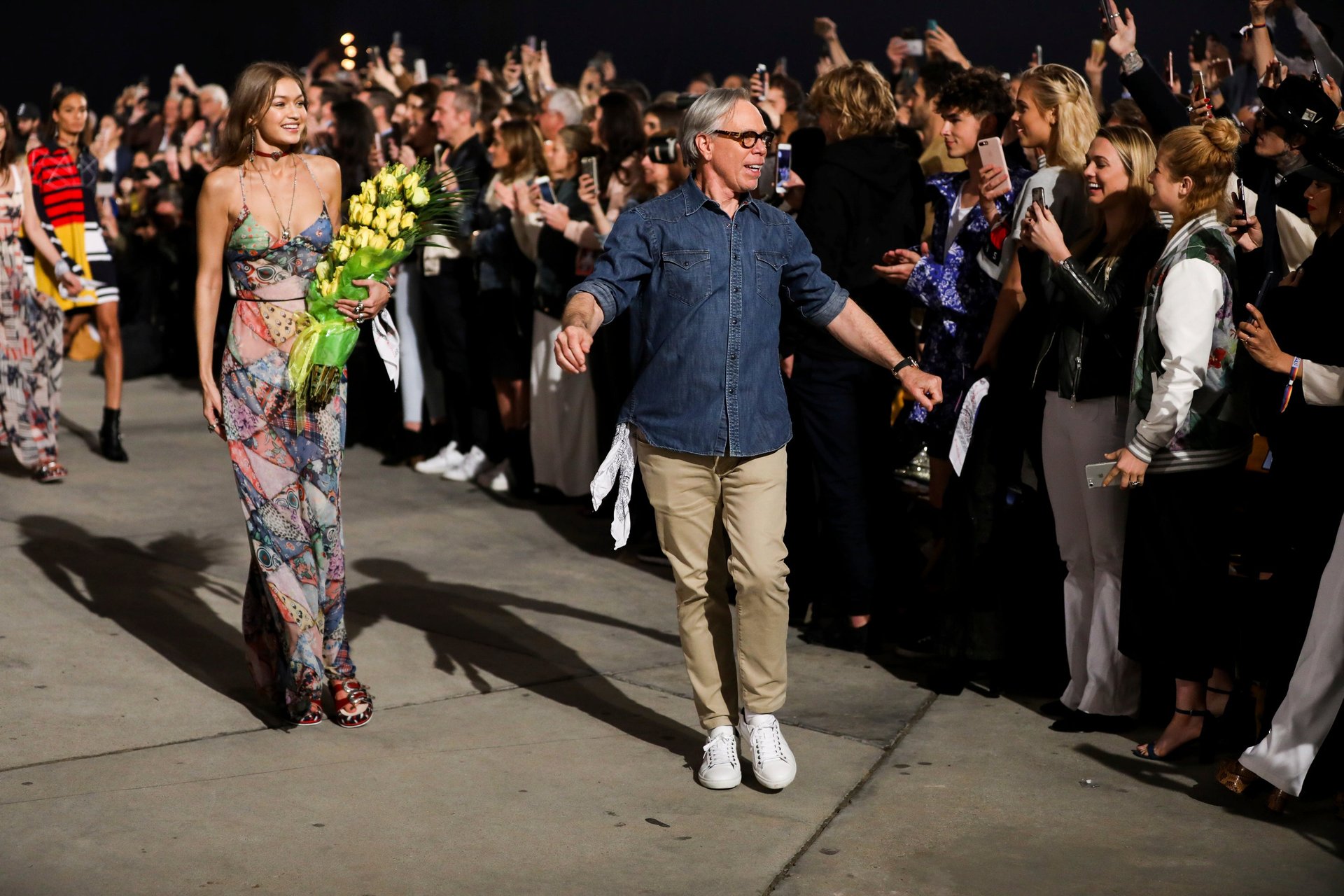The trouble with all those t-shirt slogans about diversity on fashion’s runways
Perhaps more than any one silhouette or style or color, what stood out most on the runways at New York Fashion Week, which wrapped Feb. 16, was advocacy.


Perhaps more than any one silhouette or style or color, what stood out most on the runways at New York Fashion Week, which wrapped Feb. 16, was advocacy.
Designers and others in the industry made a visible point of displaying their values, including feminism and the desire for a diverse, inclusive society that welcomes immigrants. They wore pink pins supporting Planned Parenthood, white bandanas symbolizing the ties that bind us all together, and most explicitly, slogans such as “Revolution has no borders” and “We are all human beings” printed on the clothing. Only a few made direct reference to US president Donald Trump, but it was clear his election has rattled the industry, which includes many immigrants, gay and trans people, and women, and which overwhelmingly leans left in politics.
Those who used New York Fashion Week as an occasion to promote their views had every right to do so, and it’s good that people speak up for what they believe in. Designers Prabal Gurung and Christian Siriano are also donating proceeds from sales of their slogan tees to organizations working toward their causes.
But what do these displays really accomplish? Designers risk little in sending political statements down the runway while selling clothes to a crowd that almost uniformly agrees with their stances. And before the US fashion industry pats itself on the back for its progressiveness, it still has genuine problems to face on diversity, not to mention factories staffed with underpaid workers, abroad and at home. The most important statements designers are making have nothing to do with a slogan on a shirt.
The runways themselves are far from a paragon of inclusivity. The lack of racial and ethnic diversity among models cast in shows has been a sore point for years. Even less common is diversity in body type. Only a few designers, such as Chromat, have consistently made it a point to show clothing on women outside the conventional tall, skinny mold, though actual fashion customers range widely in size and shape.
Less visible, but arguably more important, is the lack of diversity in management and executive positions in the industry. Even in New York, black designers make up just a sliver of those who present. The same goes for other high-level roles in the business. Designer Tracy Reese, one of the most prominent black designers working today, told the New York Times the racial divide exists “on every level: journalists, buyers, merchandise managers, executives.” A brand consultant made the same point to the fashion site Glossy recently.
New York fares better when it comes to the share of its designers who are women, but the majority are still men, even in a business that relies disproportionately on women for its sales. And again, there’s still a gap in management positions behind the scenes.

It’s worth noting that the New York fashion industry has made strides in addressing some of these issues—led in fact by some of the brands making the loudest noise with their slogans.
Public School, for example, which put models in hats that said “Make America New York”—a riff on Trump’s “Make America Great Again” caps—has shown some of the more diverse castings in New York. That runway diversity does more good than a clever accessory. (Cofounder Maxwell Osborne is also among that sliver of black designers represented at New York Fashion Week.)
Christian Siriano has long been a champion of body diversity, and his casting decisions have made more of a statement than his “People are people” t-shirt could—even if it benefits the American Civil Liberties Union.
Prabal Gurung, who sent t-shirts declaring ”The Future Is Female” down the runway, included a few curvy models in his show, and recently launched a line with retailer Lane Bryant. These actions show an actual commitment to women of different sizes that will have more impact than any catchphrase.
There’s also the matter of who the industry relies on to make its clothes.
Larger brands such as Tommy Hilfiger often manufacture overseas in countries where low wages prevail. Hilfiger and the star model of his show, Gigi Hadid, both appeared wearing the white bandanas that the trade publication Business of Fashion suggested people wear to represent the ties that join us together. Yet Tommy Hilfiger’s parent company, PVH, which manufactures its line, came under fire recently for sourcing in Indian factories that reportedly mistreat workers. The company says it is committed to addressing the issues, but it has had such problems in the past as well.

Many smaller, more upscale labels may imply they’re exempt from these issues because they produce their clothes in New York or Los Angeles, but these cities’ industries are rife with problems of their own. A 2014 report (pdf) by Verité, a non-profit that consults brands on ensuring fair labor in their supply chains, found that wage and working-time violations were widespread in the US garment industry.
Verité’s report was about the immigrants, particularly undocumented immigrants—the sort Donald Trump has targeted—who predominately staff garment factories in the US. It cited a 2008 survey of workers in Chicago, Los Angeles, and New York by the National Employment Law Project that found apparel and textile factories had the highest rate of minimum wage violations among the low-wage industries surveyed. Often workers were expected to put in 12-hour days, six or seven days per week, and didn’t always receive overtime pay or make the minimum hourly wage. Women were particularly vulnerable to being exploited, which doesn’t reflect well on an industry that claims feminist ideals.
It’s clear that in the age of Trump, people feel the need to take a stand. Designers and brands, like many others, are still figuring out how to do that. Political statements on runways are perfectly fine—but they’re hardly a form of resistance. On the contrary, they’re usually preaching to an audience of the converted, which does little to spread the message to those who need to hear it.
Most importantly, they’re no substitute for the real work of making the fashion industry a place that truly reflects the values of inclusivity and respect for all. That’s the real resistance, and on that front, there’s still much to be done.